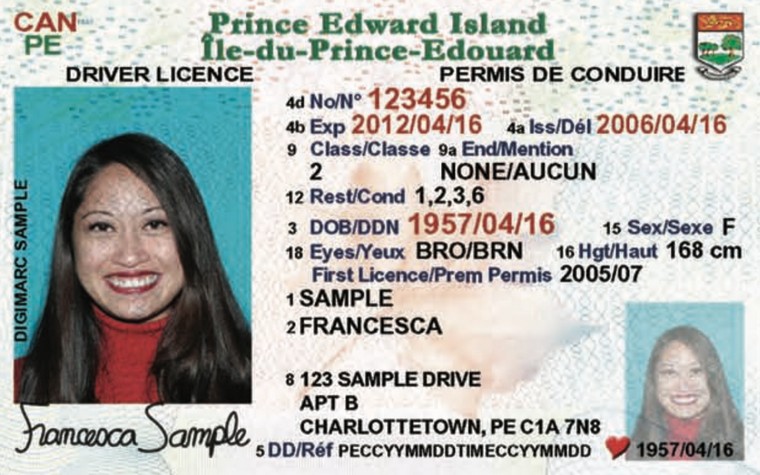All your missed questions are saved
automatically for extra practice.






It's a practice test that's automatically made up of all your missed questions. Once you finish this test, you’ll be able to revisit your Challenge Bank™ to practice and sharpen your skills.
View All PlansAdding difficult questions to Challenge Bank™ is an exclusive Premium feature. Unlock access to 650+ exam-like questions, a Pass Guarantee, personalized study plans, and more.
View All PlansFREE PE Class 2 (Bus) Commercial Licence Practice Test
- Based on 2026 PE commercial driver's licence manual
- Updated for January 2026
- Perfect for first-time and renewal commercial applicants, and those adding endorsements
- Triple-checked for accuracy
If you’re aiming to become a bus driver in Prince Edward Island, you’ll need a Class 2 Commercial Driver’s Licence. This license allows you to operate buses, including school buses, special activity buses, and special vehicles used to transport passengers. The demand for professional bus drivers is consistent, as they play a key role in public and private transportation sectors. To prepare for the road, thorough study and practice are vital. You must pass both knowledge and road tests to obtain your licence.
The knowledge test consists of multiple-choice questions based on the official Prince Edward Island Commercial Driver’s Guide, and you need to score at least 80% to pass — although this benchmark is subject to change as per Prince Edward Island Transportation regulations. The test typically takes about 30 minutes to complete. During the road test, you’ll demonstrate your practical skills in bus operation to an examiner.
While the official guide is an indispensable resource, practice tests offer the hands-on experience that reading alone cannot. This practice test, featuring questions, is tailored for the Prince Edward Island Class 2 licence aspirants. It’s derived from the 2026 PE Commercial Driver’s Guide, and each question comes with an explanation to deepen your understanding of the rules. Good luck, and remember, safety is paramount when you’re in the driver’s seat!
Reviewed for legal and handbook accuracy
M.S. (MIT), Chief Educational Researcher (ACES member)
Test design and learning experience oversight
Co-founder & CEO, 15+ years in driver education
Are you in another province?
- Alberta: Test 1 / Test 2
- Manitoba: Test 1 / Test 2
- New Brunswick: Test 1 / Test 2
- Newfoundland and Labrador: Test 1 / Test 2
- Northwest Territories: Test 1 / Test 2
- Nova Scotia: Test 1 / Test 2
- Nunavut: Test 1 / Test 2
- Ontario: Test 1 / Test 2
- Prince Edward Island: Test 1 / Test 2
- Quebec: Test 1 / Test 2
- Saskatchewan: Test 1 / Test 2
- Yukon: Test 1 / Test 2
Our commitment to accuracy and quality in our practice tests
Explore our rigorous, multi-tiered verification process that ensures each question mirrors the official manual for unparalleled accuracy.

At Tests.ca, we understand the importance of reliable and accurate practice tests to help you prepare for your driver's knowledge exam. That's why we've developed a meticulous process to create and continually update our practice questions, ensuring they reflect the most current driving laws and regulations.
Here's an inside look at how we maintain the highest quality in our practice tests.
Content Creation and Verification Process
- Alignment with Official Driving Handbooks:
Every question we develop is based on the most recent version of each province's official driving manual. Our team regularly monitors each province's official website for the latest updates to ensure our practice tests are always aligned with the most current information. - Community Feedback Integration:
We leverage feedback from our vast community of users to understand which topics are most frequently tested. This helps us focus on the areas that are most relevant and beneficial for your preparation. - Expert Content Creation:
Our in-house editor, Steven, who has extensive experience in driver education, crafts each question with precision. He conducts a thorough review of each question against the official manuals to ensure accuracy. - Rigorous Review Process:
Once Steven has finalized a set of questions, our team conducts a joint review session. This second level of scrutiny involves content accuracy, proofreading, and fact-checking to eliminate any errors. - User Feedback Mechanism:
After a question goes live on our site, we keep the lines of communication open. Each question features a feedback button, inviting users to report any issues or errors. This continuous feedback loop allows us to address and rectify any concerns promptly. - Responsive Updates:
In line with our commitment to accuracy, we quickly update our practice questions to reflect any changes in the provincial government manuals. Additionally, we update the free electronic copy of the province's driver's license manuals on our site, typically within a few days after the government publishes them.
Our thorough quality control process ensures that you have access to practice tests that are as accurate and up-to-date as possible. We believe in the power of well-prepared drivers and are dedicated to providing you with the best study tools to help you succeed on your driver's knowledge exam.


